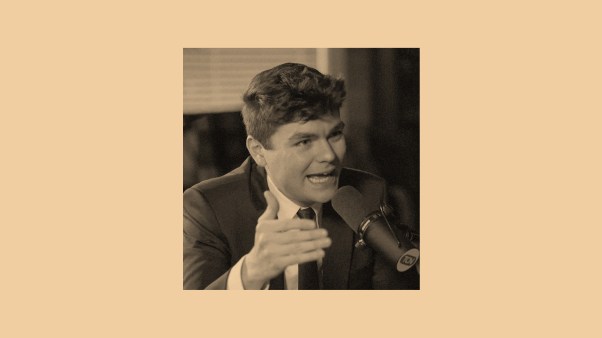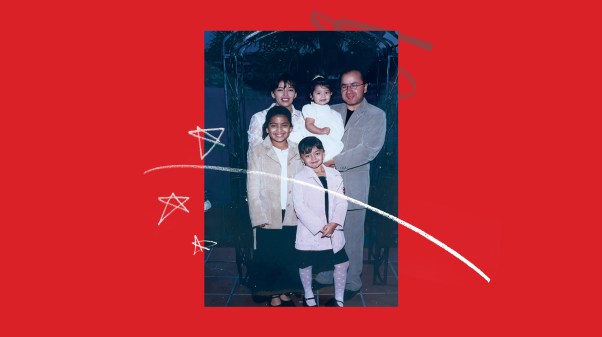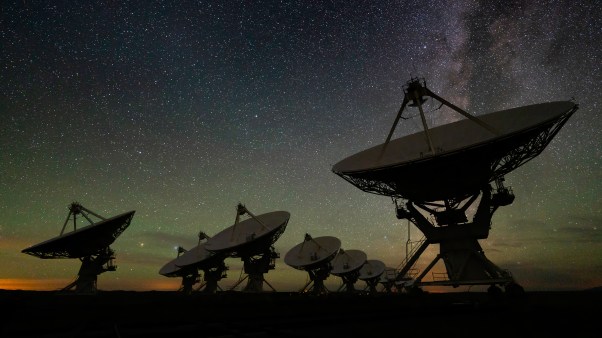NEWS
Leonard Bernstein, Kennedy friend and Angela Davis sympathizer, dedicated the John F. Kennedy Center for the Performing Arts with what Paul Hume of the Washington Post called a “spiritual masterpiece” and Father Gilbert Hartke of Catholic University described as a “mish-mosh solemnis.” Although critics were generally harsh on Mass, audiences at all eleven performances gave the show long, boisterous standing ovations.
The Center also got its share of derogation: one critic called it a “Brobdingnagian shoebox.” Made of Carrara marble—all 3,700 tons donated by Italy—the building is a rectangle the size of four football fields decorated in a red and gold combination that verges on the gaudy. The Opera House, the Center’s middle theater, is designed for opera and ballet. Mass contains a little bit of both—as well as blues, jazz, marches, and even some fairly hard rock. To perform this motley music, Bernstein uses a string orchestra with organ and percussion in the pit, two rock bands, a brass marching band, and a woodwind ensemble on stage—plus two choruses, assorted soloists, and twenty-three well-trained dancers.
Kyrie eleison, a prerecorded twelve-tone soprano duet increasing in intensity and confusion, pierces the silent, darkened theater. The curtain rises and the celebrant, melodramatically played by Alan Titus, sings “A Simple Song” to and about his God. “God,” he says, “is the simplest of all.” The viewer isn’t told what this means, but apparently Titus plays a believer; as the song ends he dons the first robe of his clerical garb.
From this point on, the action never lags. The congregation—some dressed as straights, others as hips—sing, swing, and dance across the entire stage. The choreography is excellent, and most of the soloists certainly know how to sing; in fact, the enthusiasm and professionalism of the performers surprises and impresses.
When the purple-clothed monks enter with the elements, the mass begins to throb with conflict. The celebrant kneels to pray, mumbles a few Latin words, and is drowned out by the congregation and orchestra. As he begins the confession he is again silenced by the clamoring questions of the congregation, who refer to the Incarnation as a “small social call” and to God as “plastic.”
The Credo is turned upside down, becoming non credo in unum deum: One man wants to believe but can’t, another once believed but doesn’t anymore, and a third will believe “in any God who believes in me.” One God, three, or twenty-three—it makes no difference if only God will make himself known. “We’re fed up with your heavenly silence,/And we only get action with violence.” Perhaps the crowd has never stopped declaiming long enough to hear God’s still, small voice.
The celebrant is the thematic key. It is essentially his mass and his conflict. The congregation look to him as the answer man for all their doubts: he acts so self-assured. As he walks through the congregation, people rise with arms outstretched to him. After he reads the epistle, the song “The Word of the Lord” affirms that God’s truth will survive. But Bernstein’s political allusions to “men of power” and “local vocal yokels who we know collect a crowd” shatter what could have been his most positive religious statement:
For the Word,
for the Word was at the birth
of the beginning
It made the heavens and the earth
and set them spinning,
And for several million years
It’s withstood all our forums and
bad ideas …
It’s been tough
but it seems to be winning.
As in the traditional mass, the celebrant adds vestments as it progresses. The more outwardly religious he appears, the more confusion is seen in his face and heard in his voice. “Let us pray,” he repeats with increasing desperation. But there are no prayers, only plaintive music interrupted by painful electronic organ sounds.
The priest tries to praise God, but the choirboys take him from his task with stunts and acrobatics while they continue to sing the gloria patri. The symbolism is apparent. The children vie for the celebrant’s favor and attention with look-at-me hand motions just as human beings, Bernstein seems to say, vie for God’s favor.
As Mass draws closer to the consecration of the elements, the dancers foreshadow what is to come with frenzied, angular movements. The congregation taunt the celebrant with agnus deis and dona nobis pacems. They surround him, screaming, demanding peace—peace, not just meaningless religious ritual. Bernstein’s stage directions to be “menacing, wild, barbaric, and relentless” express exactly the congregation’s attitude. They are the visual image of the celebrant’s own soul, tormenting and mocking him.
The celebrant turns from his congregation to begin his ascent up a long flight of stairs, carrying the bread and wine. He stumbles but continues, bent low. Unfortunately, intended or not, the scene is reminiscent of Christ’s trip to Calvary. At the top of the stairs the priest stands with outstretched arms, still holding the chalice of wine and the bread.
The congregation then go berserk in one of the show’s most bizarre scenes. The lighting changes from purple to red to orange—and the music, singers, and dancers seem on fire with orgiastic ecstasy. The scene is suggestive of the Israelites in the golden calf orgy, with Moses holding the twelve tablets and looking down on the people from the mountain top.
This episode epitomizes the charge made by New York Times critic Harold Schonberg that the show is “vulgar … pretentious and thin, as thin as the watery liberalism that dominates the message of his work.”
The celebrant screams “let us prayer” and the orgy abruptly ends. As he descends the stairs he throws down the elements, crying “how easily things get broken.” “An accident, it was only an accident,” he says while he tramples the bread and wine into the ground. The sequence is meant to be tragic; instead, the celebrant is merely pathetic in his childish agony. He cries, babbles, and whines through sixteen tedious minutes. Ripping off his vestments, he asks the congregation why they look up to him: “Can’t you see? Underneath there is nothing but me.”
He desecrates the altar, plays in a sandbox (how unsubtle, Mr. Bernstein), and finally (thankfully) descends into the orchestra pit and exits.
In places Mass is shocking, almost blasphemous. At one performance a woman yelled: “This is pagan, not Christian.… It is sacrilegious.” She then left, sputtering.
Reaction of Catholics was mixed, but most felt horror and despair, according to Father Hartke, Catholic University’s drama head. He told CHRISTIANITY TODAY he had received numerous telegrams from throughout the country. He said of Bernstein: “It appears to me that this is a mind that neither understands nor believes in the mass.… This work and I are worlds apart.”
Although Bernstein’s intention “is to communicate as directly and universally as I can a reaffirmation of faith,” his conclusion is unconvincing. The congregation, singing laude, laude, resolve the spiritual crisis without God, whose voice is never heard. This emptiness drives the celebrant mad—and leads the congregation to rely on human emotion for salvation.
Even this humanism is shallow and vapid. The lyrics are devoid of deep meaning, the symbolism is overworked, the music is derivative, and the conflicts fail to grip the problem.
“Go in peace, the mass is ended,” Bernstein concludes. But no peace is found in this “reaffirmation of faith.” Man’s restlessness remains.










